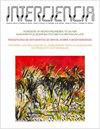E-HEALTH LITERACY AND CYBERCHONDRIA SEVERITY RELATIONSHIP: AN ANALYSIS FOCUSING ON TEACHERS
IF 0.4
4区 综合性期刊
Q4 ECOLOGY
引用次数: 0
Abstract
As a result of the recent widespread use of the Internet, individuals search for their questions or problems on the Internet. This situation has led to the concepts of e-health literacy and cyberchondria. The aim of the study is to determine the level of e-health literacy and cyberchondria seriousness of teachers who prepare children and adolescents, the youngest members of society, for life. The population of the cross-sectional study consists of teachers working in the Ayvac?k district of Samsun province in the 2022-2023 academic year (N=301). The sample of the study was determined to be 183, with a 95% confidence interval and a 5% margin of error. The study data were collected between 15.07.2023 and 15.08.2023. Three forms were used in data collection, and these were personal information form, e-health literacy scale and cyberchondria severity scale short form (CCS-12). In the study, 56.1% of the participants were female, 65% were between the ages of 30-39, and 48% had been working for 1-9 years. The mean score of e-health literacy was 3.69�0.80, and the mean score of cyberchondria severity was 32.08�7.98. In the study, a statistically significant difference was found between age and marital status in both e-health literacy and cyberchondria severity. In addition, a positive low-level relationship was determined between e-health literacy and cyberchondria severity (p<0.001, r=,158). As a result, age and marital status affect e-health literacy and cyberchondria severity. In addition, cyberchondria severity increases as e-health literacy increases.电子健康素养与网络疑病严重程度的关系:以教师为中心的分析
由于最近互联网的广泛使用,个人在互联网上搜索他们的问题或问题。这种情况导致了电子保健知识和网络疑病症的概念。这项研究的目的是确定为儿童和青少年(社会中最年轻的成员)的生活做准备的教师的电子卫生知识水平和网络疑病症严谨性。横断面研究的人群包括在Ayvac?(N=301)。本研究的样本确定为183,置信区间为95%,误差幅度为5%。研究数据的收集时间为15.07.2023 - 15.08.2023。数据收集采用个人信息表、电子卫生素养量表和网络疑病严重程度量表简表(CCS-12)三种形式。在这项研究中,56.1%的参与者是女性,65%的参与者年龄在30-39岁之间,48%的参与者工作了1-9年。电子健康素养平均得分为3.69�0.80,网络疑病严重程度平均得分为32.08�7.98。在这项研究中,年龄和婚姻状况在电子健康素养和网络病症严重程度上存在统计学上的显著差异。此外,确定了电子健康素养与网络疑病症严重程度之间的低水平正相关(p<0.001, r=,158)。因此,年龄和婚姻状况会影响电子保健知识和网络病症的严重程度。此外,随着电子卫生知识普及程度的提高,网络疑病症的严重程度也在增加。
本文章由计算机程序翻译,如有差异,请以英文原文为准。
求助全文
约1分钟内获得全文
求助全文
来源期刊

Interciencia
综合性期刊-生态学
CiteScore
0.80
自引率
25.00%
发文量
1
审稿时长
4-8 weeks
期刊介绍:
Interciencia is the monthly multidisciplinary publication of the INTERCIENCIA Association. It is dedicated to stimulate scientific research, its humanitarian use and the study of its social context, specially in Latin America and the Caribbean and to promote communication between the scientific and technological communities of the Americas.
Interciencia has been published uninterruptedly since 1976. Its Founding Director, Marcel Roche (endocrinologist and sociologist of science) was editor until 2008, and thereafter Miguel Laufer (neurobiologist) has been in charge. It has been included since 1978 in the Science Citation Index and other international indexes, and since 2008 it maintains an open access electronic version with material from 2005 onwards.
The priority areas of the journal, without exclusion of other areas, are Agronomy, Arid Lands, Food and Nutrition, Biotechnology, Ecology and Environment, Energy, Innovation and Technology Transfer, Marine Resources, Non-renewable Resources, Science Education, Science Policy, Study and Sociology of Science, and Tropical Forests.
Interciencia publishes in Spanish, Portuguese and English research and review articles, communications and essays, all of which are subjected to peer review. Additionally, it includes non-refereed sections such as Editorial, Letters to the Editor, Open Town Hall, Book Reviews and Upcoming Events.
All the material submitted to the journal for publication and accepted by the Editorial Committee in view of its quality and pertinence is subjected to review by peer specialists in the corresponding fields of knowledge. Neither the INTERCIENCIA Association, nor the journal or the institutions to which the authors belong carry responsibility for the contents. Signing authors are responsible for the material published under their names.
 求助内容:
求助内容: 应助结果提醒方式:
应助结果提醒方式:


